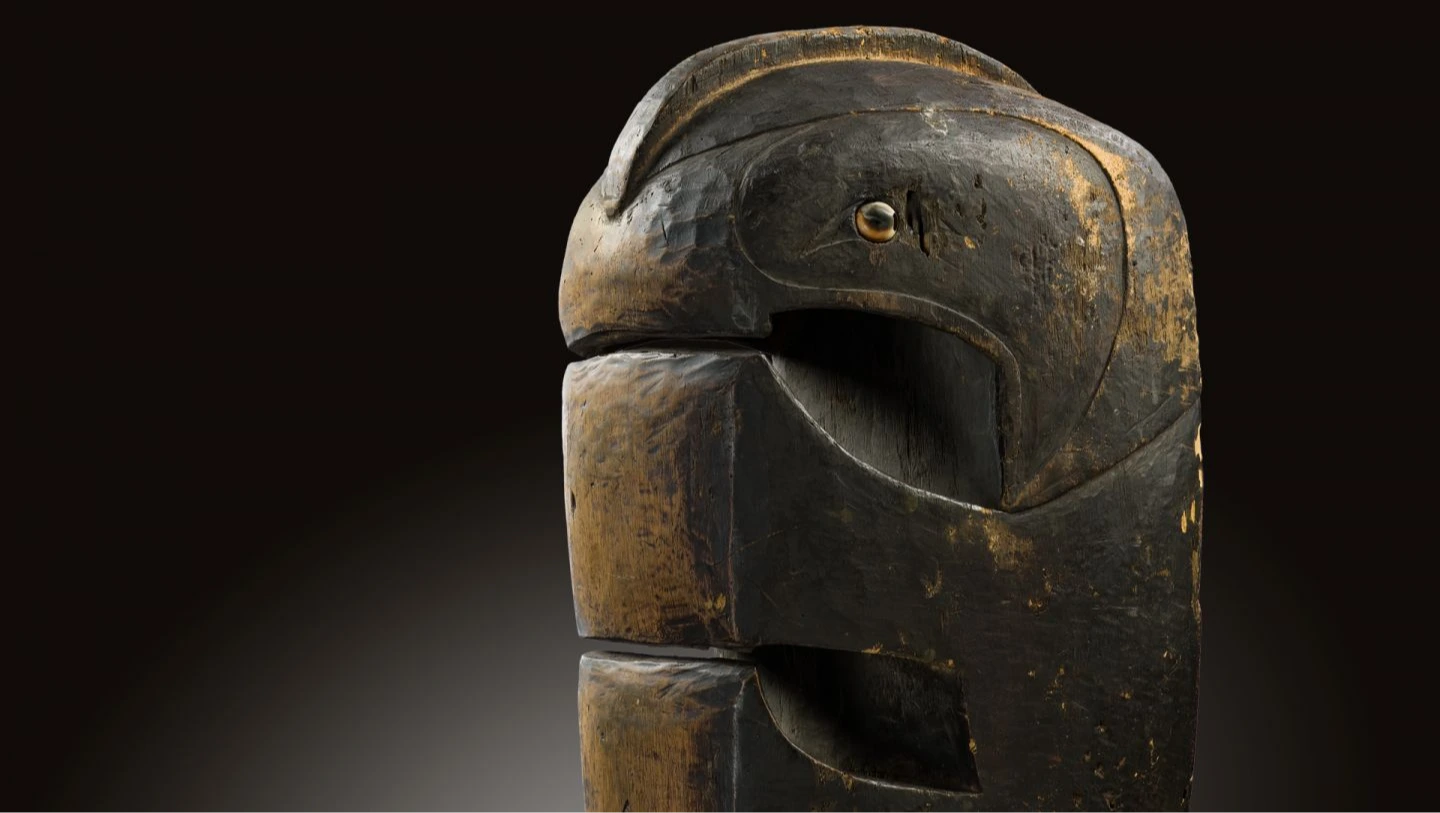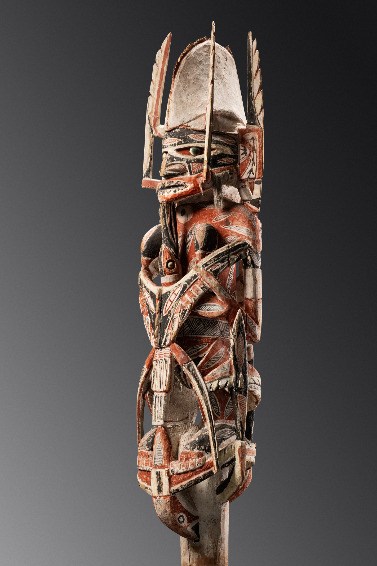Art d‘Afrique, d‘Océanie et des Amériques
13. Avril 2024 – Œuvres d’importance historique provenant de quatre collections privées

Vente aux enchères à Würzburg:
Samedi, 13 avril 2024 – 14h
Expositions à Würzburg:
du 10 au 12 avril – de 10h à 17h
et par arrangement
Nous avons le plaisir de présenter des œuvres historiques importantes provenant d’une collection privée de Munich étroitement liée au Linden-Museum et à Ludwig Bretschneider. Parmi celles-ci, se distingue ce rare tambour à friction, dont la forme n’a été sculptée qu’en Nouvelle-Irlande, ce qui en fait un objet unique dans la région océanique.
D’autres collections ont été sélectionnées: Afrique et Japon de la collection Werner Zintl (partie 2). Océanie et armes - boucliers d’Afrique de la collection Alexander Kubetz (partie 2). Céramiques précolombiennes des cultures Moche et Nazca de la succession Klaus Kalz (partie 1).
Plus de détails à suivre prochainement.
Papouasie-Nouvelle-Guinée - Archipel Bismarck - Nouvelle Irlande - Simberi (Îles Tabar): Figure féminine "malagan"
ProvenanceCarl Haug, Friedrich-Wilhelms-Hafen (Madang), Papua New Guinea Linden-Museum, Stuttgart, Germany (1909) Arthur Speyer, Berlin, Germany (1965) Ludwig Bretschneider, Munich, Germany Munich Private Collection The figure was collected by Carl Haug, who worked in German New Guinea as captain on the North German Lloyd steamer “Siar”, which was launched in 1902. He sailed the “Siar” in rotation with Captain Hermann Voogdt and Alfred Knoth, both of whom were also enthusiastic collectors of ethnographic artefacts.Papouasie-Nouvelle-Guinée - Province Sepik oriental - Rivière Yuat, Biwat: Rare masque facial anthropomorphe
ProvenanceFrederick North, London, Great Britain Cornelis Pieter Meulendijk (1912-1979), Rotterdam, The Netherlands Christie’s London, “The Meulendijk Collection of Tribal Art”, Part I, 21 October 1980, Lot 296 Alexander Kubetz (1946-2023), Munich, GermanyÎles Marquises: Pédale d´échasse "tapuva'e"
ProvenanceJohann F. Gustav Umlauff, Hamburg, Germany Ernst von Sieglin (1848-1927), Stuttgart, Germany Linden-Museum, Stuttgart, Germany (1905) German Private Collection (1965) Alexander Kubetz, Munich, GermanyR. D. Congo, Luba: Tabouret à cariatide féminin "kipona" ("kihona", "kikona", "lupona")
ProvenanceLeutnant Francis Richard von Parish (1870-1903), Falkenstein im Taunus Linden-Museum, Stuttgart, Germany Ludwig Bretschneider, Munich, Germany (1971) Munich Private Collection Francis Richard Parish, lieutenant in the Württemberg Queen Olga Dragoon Regiment, was transferred to the Schutztruppe for German East Africa at his request in the summer of 1901 and arrived in Dar-es-Salam in September of that year. He left the capital of the colony in December 1901 and travelled through its entire territory from east to west in order to take command of the Ishangani station on Lake Kivu after a march of around three months. Parish could not cope with the climatic conditions and fell seriously ill. He returned to Europe at the beginning of July 1903 and died just three weeks later.Îles Marquises: Massue "u'u"
ProvenanceJohann F. Gustav Umlauff, Hamburg, Germany Ernst von Sieglin (1848-1927), Stuttgart, Germany Linden-Museum, Stuttgart, Germany (1905) Ludwig Bretschneider, Munich, Germany (1969) Munich Private CollectionPapouasie-Nouvelle-Guinée - Archipel Bismarck - Nouvelle Irlande: Rare tambour à friction "livika" ou "lunet"
ProvenanceMaximilian (“Max”) Franz Thiel (1865-1939), Hamburg, Germany Linden-Museum, Stuttgart, Germany (1908) Ludwig Bretschneider, Munich, Germany (1970) Munich Private Collection Maximilian Franz Thiel was the son of Rosetta Albertina Hernsheim, the sister of Eduard and Franz Hernsheim, the founders of the trading company Hernsheim & Co. From 16 January 1884, he worked for the company on Jaluit (Marshall Islands). In 1886 he went to German New Guinea, where he lived on Matupi(t) near Rabaul and in the Bismarck Archipelago. He became a partner in Hernsheim & Co in 1892 and managing director by 1903 at the latest. On 16 May 1910, Thiel left German New Guinea and returned to Germany, where he managed the Hernsheim company as director until 1932. He died in Hamburg in 1939. Ethnographic collections were an important side business for Thiel and Hernsheim & Co. Objects from Thiel’s collections can be found today in many museums in Europe and the United States. Between 1911 and 1921, the Museum für Völkerkunde Hamburg received over 450 objects from Germany’s Pacific colonies through Thiel, which the museum claims were “high-quality donations”. Felix von Luschan, who was responsible for the Africa and Oceania collections of the Ethnological Museum in Berlin, was also supplied with ethnographic artefacts by Thiel. Another of Thiel’s customers was Karl von Linden, whose ethnological collection was to lead to the founding of the Linden Museum in Stuttgart.






